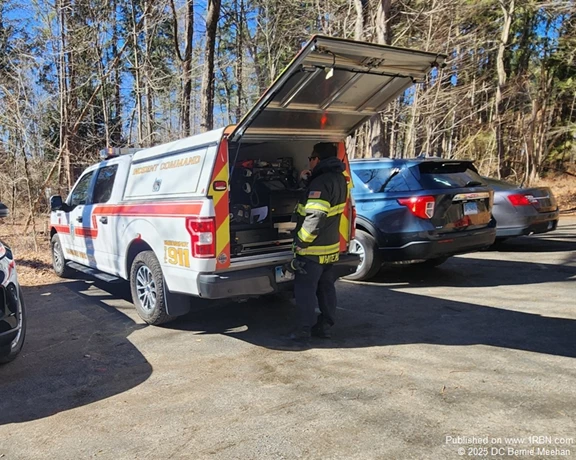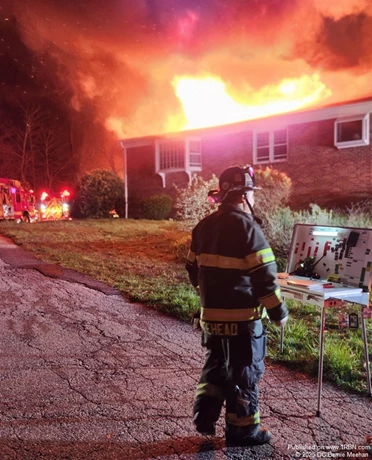Command Tool - The Command Aide


Photo by DC Bernie MeehanCommand Aide at the Vehicle

Photo by DC Bernie Meehan Command Aide remote from Vehicle
The Evolution of Command: A Personal Reflection
For over a decade, I served as Shift Commander/Deputy Chief in a mid-sized New England city of approximately 100,000 residents, with an additional 30,000–40,000 daily visitors and workers. The city presents a wide array of public safety challenges: an interstate highway, a large lake, an airport, and a mix of manufacturing and tech facilities. We average around 13,000 calls annually.
Our department operates five Engines, one Squad, one Truck, one TAC (two-person unit), and one command unit—Car 30. Historically, we had twelve volunteer companies, now reduced to six, and we respond frequently with four city EMS ambulances.
“Car 30” has been the sole command officer for the city for nearly 70 years. In earlier decades, the Fire Chief was a regular presence at fire scenes, often assuming command, especially during the city’s transition away from its once-dominant hat factories. Today, administrative demands have shifted the Chief’s role, leaving the Shift Commander as the primary field commander—often working alone.
The role has evolved from simply standing at Side A of a structure fire to commanding complex incidents while coordinating with multiple agencies. Initially, the Shift Commander was dispatched only to major incidents—structure fires, junkyard fires, and select alarms. Equipped with a single-channel walkie-talkie, the IC would call for a second alarm based on visual assessment.
Then the fire service changed.
We began implementing the Incident Command System (ICS) and other safety protocols to reduce firefighter injuries and fatalities. In earlier days, only company officers had radios, and they rarely used them during operations. Hydrant activation was signaled by two honks of the engine’s air horn. Communication was minimal—and dangerous. NIOSH still cites communication failures as a leading cause of firefighter injuries and deaths.
The introduction of fireground channels in the late 1980s and early 1990s was transformative. It allowed ICs to communicate directly with crews without the interference of dispatch traffic. Initially, I was skeptical—concerned about missing critical updates from dispatch. But we adapted.
Operating on dual channels became the norm. Scanning didn’t suffice; simultaneous transmissions on different frequencies made multitasking essential. For those of us with ADHD, this chaotic environment oddly suited our cognitive wiring. I developed personal strategies—Fireground mic on the left shoulder, Dispatch on the right. Two ears, two channels, one brain.
When overwhelmed, I’d hand off the dispatch radio to a trusted volunteer or extra crew member. Occasionally, career staff assigned a “driver” to Car 30. As a young firefighter and self-proclaimed radio geek, I often filled that role. At one memorable lumberyard fire, I handled all dispatch communications while my commander focused on fireground ops.
As our responsibilities expanded—EMS, Hazmat, technical rescue, airport operations, water and ice rescue, active shooter response—we had to master new communication tools and protocols. We trained to use aviation radios, marine channels, and even GPS-based tools like What3Words and Find My iPhone for wilderness rescues. During COVID, we became adept at locating lost hikers—an unexpected challenge for an urban department.
We acquired a Regional Communications truck and a STOCS box (portable repeater), and were among the first departments to deploy drones. Only two of us held Part 107 licenses, enabling us to assist neighboring towns.
Then came a pivotal shift: our new Chief, from a larger city, introduced the concept of Command Aides—common in departments with multiple Battalion Chiefs. Recognizing both the threat and opportunity, he proposed adding a firefighter-level Command Aide to our minimum staffing. Deputies were allowed to choose their own aides.
I selected a senior firefighter—highly trained, energetic, and experienced. A former Submarine Base firefighter, union officer, and athlete, he was a known quantity with the right temperament to match my own high-energy style.
The Command Aide drives the vehicle, allowing the Shift Commander to focus on intel gathering, strategy, and tactical planning en route. I can monitor CAD updates, mapping, hydrant locations, call history, and multiple radio channels without distraction. Upon arrival, I manage fireground communications while the Aide sets up the command post and handles logistics. A simple “Johnny, give me a second alarm” gets the job done.
Having two personnel in the command unit enhances safety and capability. On our first shift together, we arrived first at a crash where a driver’s arm was nearly severed. My aide applied a tourniquet within seconds, saving the man’s life. Months later, we encountered a suicidal individual on the interstate. His athleticism and quick thinking helped us safely intervene until law enforcement arrived.
Today’s fire service is complex. ICS, RECEO-VS, SLICERS, accountability, safety, situational awareness, and technology demand more than one person can manage alone. Command is a function—not a person. Shared command is increasingly essential for effective incident mitigation.
The Command Aide position should be standard in any staffed department and mandatory in volunteer operations once an incident involves multiple companies. It’s not just helpful—it’s vital.




